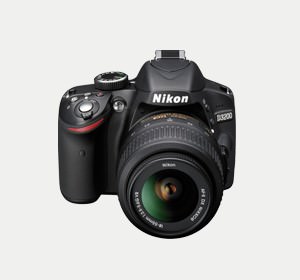How To Photography: 8 Features You Should Understand Before Buying a Digital Camera
 The
choices of digital cameras may be as overwhelming as the selection of
car models. That seems to be the way of commerce and free enterprise: to
design, manufacture and introduce new cameras (or any products) for
ever-narrower niche audiences. You wouldn’t want your interest in or
passion for digital photography to be diminished by the daunting task of
choosing a camera? Although each digital camera has a long list of
functions and capabilities (just take a look at a spec sheet!), you can
typically make an excellent selection when you focus on the following 8
features.
The
choices of digital cameras may be as overwhelming as the selection of
car models. That seems to be the way of commerce and free enterprise: to
design, manufacture and introduce new cameras (or any products) for
ever-narrower niche audiences. You wouldn’t want your interest in or
passion for digital photography to be diminished by the daunting task of
choosing a camera? Although each digital camera has a long list of
functions and capabilities (just take a look at a spec sheet!), you can
typically make an excellent selection when you focus on the following 8
features.1. The sensor’s number of megapixels is still at the top of many lists, but the time has come to move it near the bottom, as this number becomes more insignificant with every passing month. Only professionals or the most serious amateurs need digital cameras with the most megapixels, so they can provide their clients with the high-resolution images they require or to create fine-art prints of a very large size for gallery display. It’s safe to say that more than 90% of digital photographers will experience all the fun and visual quality they will ever need with at least 10 megapixels…and that is what you will find in virtually every camera on the market.
2. An image stabilization (IS) system in the camera or a vibration reduction (VR) system in the lens deserves to be higher on the list of important features than the number of megapixels. You are very likely a member of the largest group of digital photographers with limited or very little experience. This results in you being unable to hold your camera steady enough, especially in low-light situations, to produce sharp, well-exposed images. Either of these systems compensate for the movement of your camera, so you’re able to capture sharp pictures.
3. Again, it’s only the pros or very serious amateurs that need lenses with fixed focal lengths. As a member of the digital photography majority, you want a camera with a zoom lens, providing a range of focal lengths instead of just one. Compact cameras come with lenses of this type as part of the body. Most of these lenses have a range of focal lengths from wide angle to telephoto for any type of photo you may want to take. If you choose a mirrorless camera or an entry-level DSLR, then you typically have a choice of zoom lenses to purchase separately for the camera. A zoom lens with a short focal length range, such as 24–70mm, is a better choice if you plan to shoot landscapes and people and portrait pictures. An 18–250mm zoom lens will allow to shoot those photos as well as long-range travel and other subject matter at a great distance with the telephoto end of the focal-length range.
5. Many of the most popular camera models for casual and beginner photographers are relatively automatic. These days you truly only have to point and shoot with many of these cameras. Don’t shortchange yourself, however. You may discover such a passion for digital photography that you want to learn more of the technical concepts and be able to control them manually for more creativity. It may make you a smart consumer, therefore, to choose a camera with the option of setting the exposure elements: aperture or f/stop, shutter speed, ISO sensitivity and other basic functions, such as white balance, focus, flash, etc.
6. Digital photography is no longer just about the camera. A computer has become a virtual equal partner in the process. Being able to edit and manipulate images and manage the workflow process are almost as important as actually taking the pictures. Learning how to use photo-editing software, such as Aperture, Lightroom and Photoshop, is particularly useful if you want complete control of the editing process. To achieve that control, you’ll want a camera that can record RAW images, which means the picture file contains all the digital data about the photo.
7. Shooting video with a digital camera, instead of a separate camcorder, is a feature that most casual, and even amateur, photographers expect to find on the camera they choose. As the camera manufacturers release new cameras, 1080 full-HD video is virtually a “standard” feature, so any of the cameras you might choose will provide all the video capabilities you need.
8. Another feature that is gaining in popularity during 2012 is Wi-Fi connectivity directly from the camera, so it is much easier to share photos and videos with family, friends and the entire world immediately. If you’re a big fan of social media and use it regularly, then one of the newer digital cameras with Wi-Fi may be your best choice.
Courtesy of : PhotographyTalk.com
One of the best ways to help you narrow your choices of digital cameras, and then to purchase the right one for you, is to read the many camera reviews on PhotographyTalk.com. They do their best to add reviews of the latest cameras, so visit that website regularly.
No comments:
Post a Comment
Note: Only a member of this blog may post a comment.